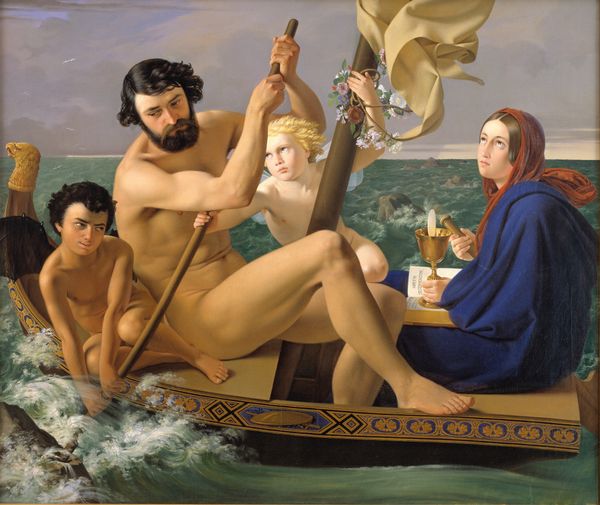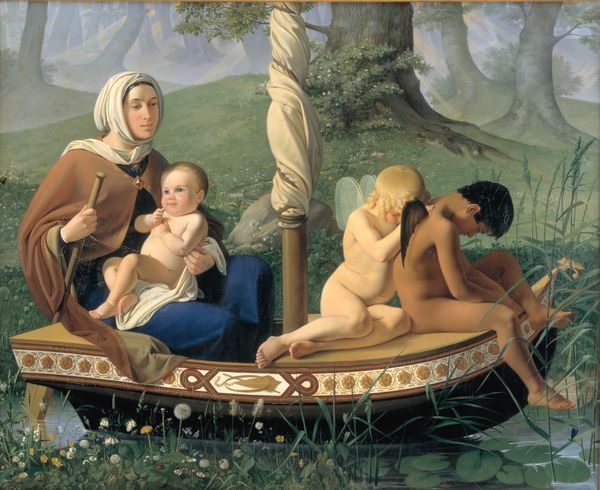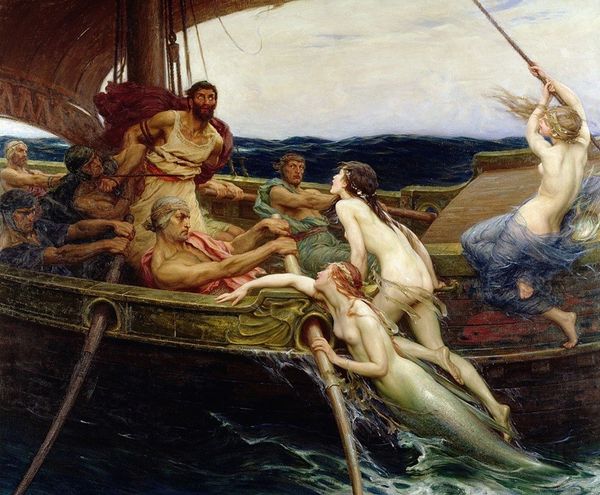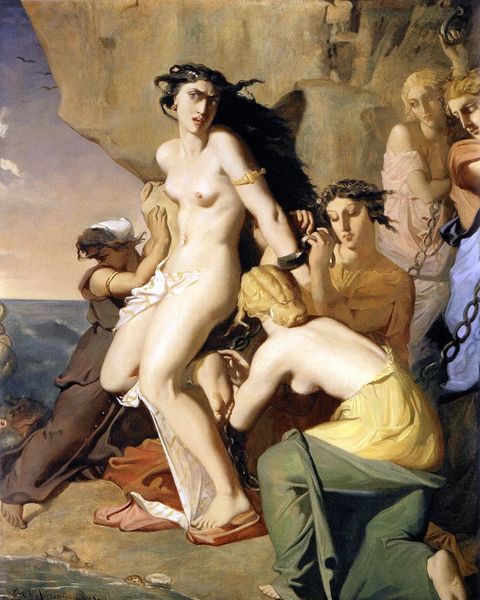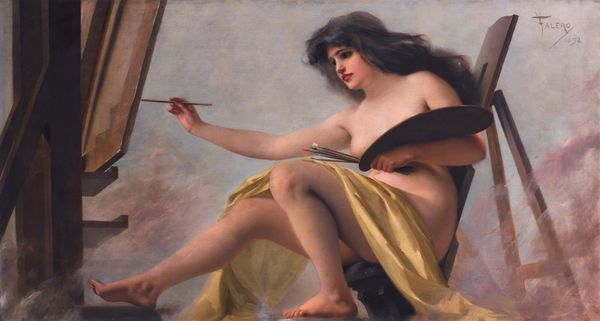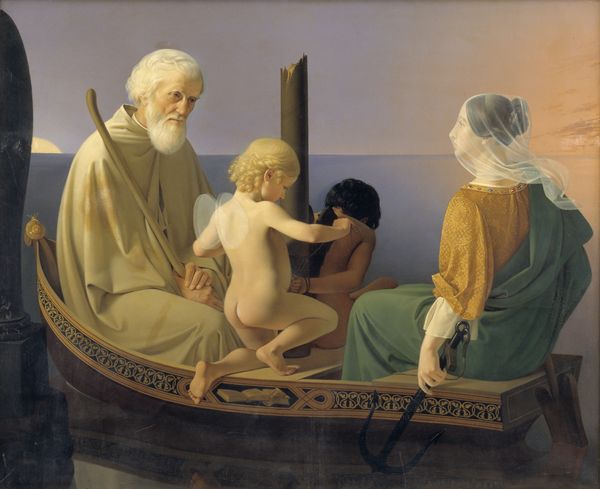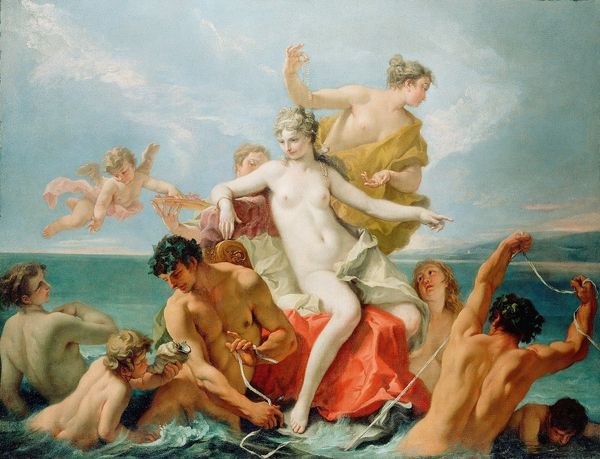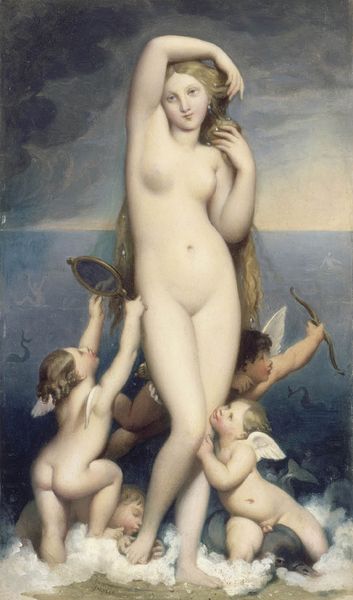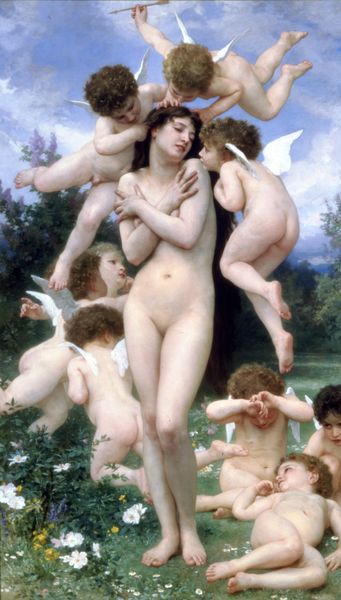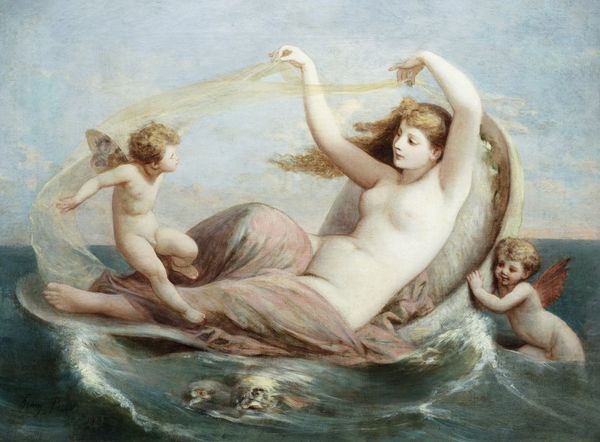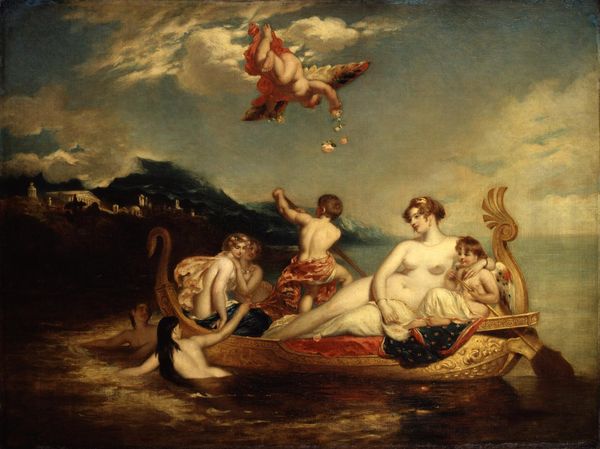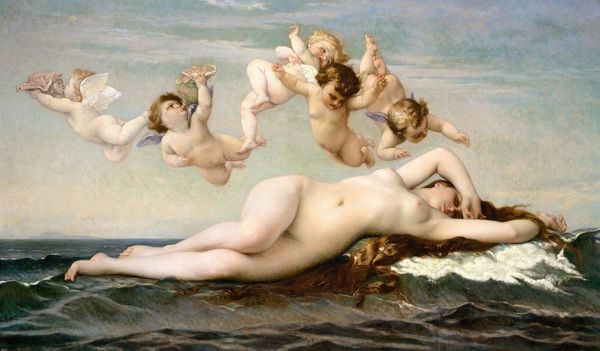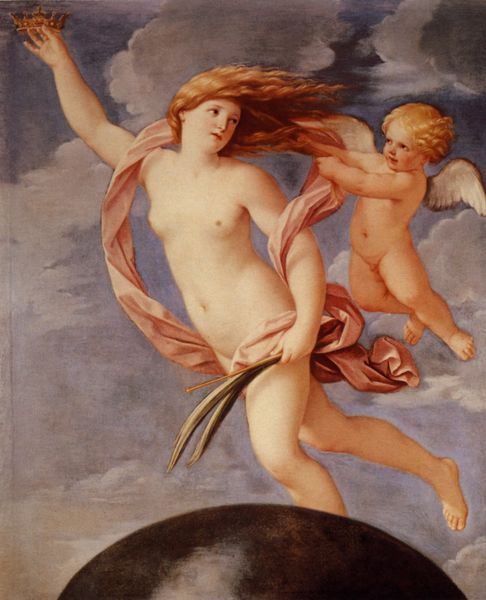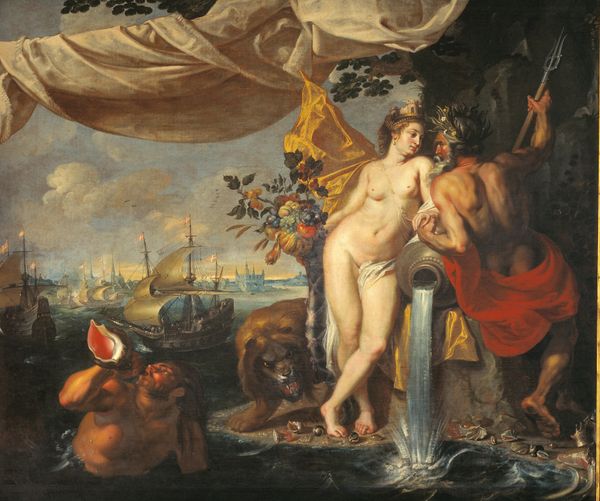
oil-paint
#
portrait
#
gouache
#
oil-paint
#
landscape
#
figuration
#
oil painting
#
romanticism
#
portrait art
Dimensions: 141 cm (height) x 167 cm (width) (Netto), 147.3 cm (height) x 175 cm (width) x 5 cm (depth) (Brutto)
Editor: Here we have Ditlev Blunck’s oil painting, "Youth," created between 1840 and 1845. Part of a series, "The Four Ages of Man", it strikes me as incredibly theatrical. I’m drawn to the stark contrasts – the bright, almost illuminated figures against the subdued landscape. What formal qualities stand out to you in this composition? Curator: Immediately, the deliberate arrangement of figures within the confined space of the boat commands attention. Notice the meticulous attention to the play of light across the figures’ skin, emphasizing their idealized forms. Consider the verticality implied by the mast and balanced by the horizontal plane of the water, creating a dynamic yet harmonious composition. What do you make of the relationship between line and form in this piece? Editor: I see a very clear distinction. The figures are sharply defined, almost sculptural, set against a more softly rendered background. It feels like a deliberate choice to isolate them, perhaps emphasizing their symbolic nature. The painting style and even the mountain back there are very linear, actually. Curator: Precisely. The sharp linearity against softer gradations creates a visual tension, drawing our focus to the idealized human forms and symbolic gestures. It raises the question of artistic intent. Was Blunck aiming for a seamless representation, or deliberately using stylistic contrasts to highlight conceptual elements? Consider how color functions, how the use of dark and light affect your experience, and think about Blunck´s choice of painting an allegory rather than simply rendering figures. Editor: I see your point. The lighting makes those idealized bodies really stand out against the rest, lending them an ethereal almost spiritual feel. Thinking about color more… maybe the warmth and flush to those skin tones, with the more muted blues in the back, help to set that feeling up even more? Curator: Exactly. A final note: Think of the materiality of the paint. Is it translucent, layered? In what ways can the painting, in its most basic physical elements, also be an argument for how meaning exists in painting, as something material and not mimetic? Editor: This has really changed my perspective, moving beyond my initial impression. I’m seeing how the formal structure communicates just as much as the figures themselves. Curator: Indeed, a closer analysis reveals the work's inherent arguments about what can or cannot be seen in the represented scene. By considering what cannot or need not be directly extracted, we have truly elevated our knowledge on "Youth".
Comments
statensmuseumforkunst almost 2 years ago
⋮
Blunck suddenly left Denmark in 1841, never to return. For a so-called “consilia abeundi” had been issued against Blunck – meaning that a public institution (consilia) advices a person to leave (abeundi) the country for a while. Had Blunck stayed in the country it is likely that he would have been prosecuted for some form of sexual transgression, presumably linked to Blunck’s homosexuality. Blunck’s style of painting is influenced by the “Nazarenes” (after “Jesus of Nazareth”), a group of primarily German artists who wished to express earnest emotions in contrast to French art and its “exteriority”. The painting is one of a series of four commissioned by King Christian VIII. Another work from the series is on display in room 221.
Join the conversation
Join millions of artists and users on Artera today and experience the ultimate creative platform.
